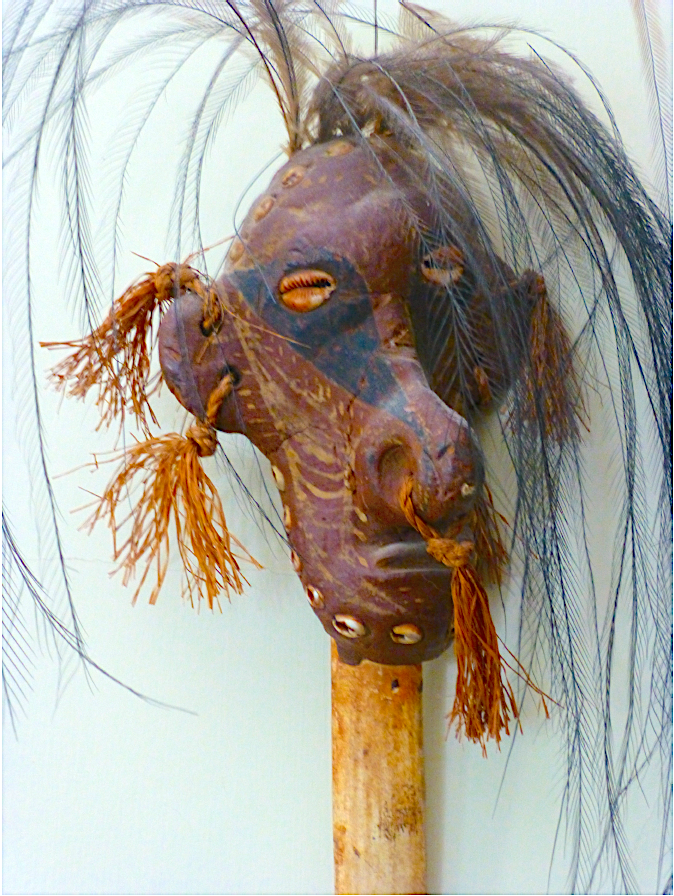Sepik Cassowary Bone Dagger
Carved of the two largest types of bone available on New Guinea - the leg bones of humans and of cassowaries, huge flightless birds of central importance in Papuan ancestor worship – daggers like this one are among the most elaborate bone objects produced in the Sepik area. The human bones used were the femurs of a man's father or grandfather, inherited after the corpse was reduced to a skeleton. Among Papuan peoples wearing the bones of an ancestor or a spouse is considered comforting, as is using those of the cassowary, another important ancestral figure.
The cassowary is viewed as the mother of man in the mythology of many New Guinean peoples. At five feet high, it is second in size only to humans on the island. This cousin of the ostrich, with its colorful head and wispy black plumage, has other powerful attributes. The cassowary is considered a dangerous and aggressive creature, and these qualities were believed to be transferred to whoever would wield a dagger carved of cassowary bone, as this presumably is.
Though this dagger is topped with a stylized human head and intended for ritual purposes, symbolic imagery is engraved or incised on the surfaces of many of these weapons. Although made to kill, daggers were (and particularly are now) at least as important as ceremonial objects. Every dagger is different, but most depict, at the top, a human face with large round eyes ringed with concentric circles. On a dagger intended for use, these features would be carved or etched and painted instead of molded; this is a striking example of the sculpted ceremonial variety.
Bone, clay, cassowary feathers, twine, cowrie shells; 34 x 14 x 8cm.
Nelson South East Asia Collection © 2025
